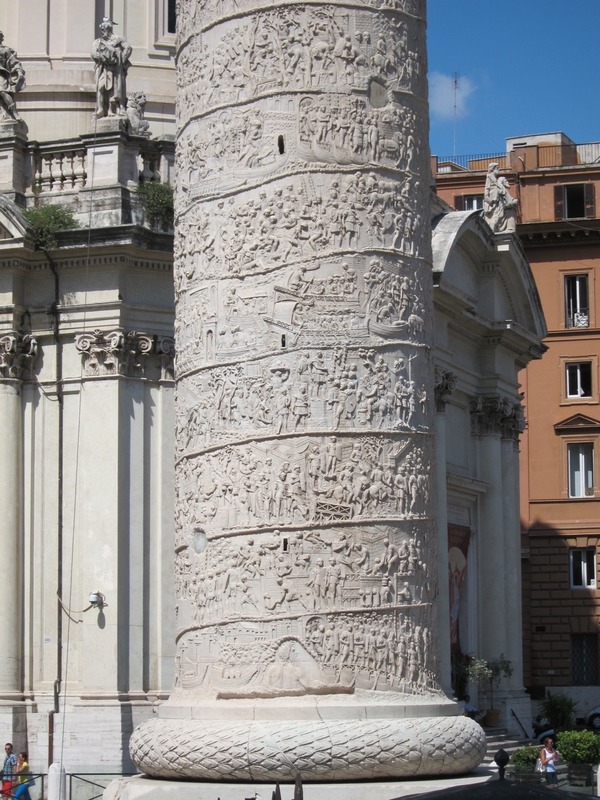Boucher, Column for Trajan
Francois Boucher’s plates from Recueil de Differents caraterres de Testes dessines d’apres la Colonne Trajane depart from his typical subject matter.1 Boucher (Paris, 1703-1770) was widely admired for his Rococo-style drawings and etchings, often in the form of portraits of wealthy and powerful peers.2 In his early career, his large mythological paintings spurred recognition in royal commissions.3
While Piranesi’s Roman etchings and prints focus on architecture, Boucher’s work is more interested in the characters represented on the architecture. This set consists of four plates, each with six detailed faces. The plates are split into two pairs, each showing two states of the same image. The main difference between the print stages is that Boucher chose to add a line gradient to the final product in order to create a background that makes the faces more visible.
The faces, only shown from the neck up, are taken from the friezes of the Column of Trajan (link to website page). Boucher pays minute attention to the facial hair and head ware, both of which can help identify them in reference to Roman society as soldiers or laymen. His placement of the faces in relation to each other in terms of direction and eye contact create relationships that may not have actually been intentionally present in the column.
______________________________________________________________________________
1 Metropolitan Museum of Art, François Boucher (New York, 1986), 46.
2 Arthur Coleman Danto, "Art; Francois Boucher," The Nation, no. 5 (April 1986): 496.
3 Perrin Stein, “François Boucher (1703–1770),” Heilbrunn Timeline of Art History, (October 2003).
4 “Column for Trajan 4,” Piranesi in Rome, accessed December 15, 2016, http://omeka.wellesley.edu/piranesi-rome/admin/items/show/41.
